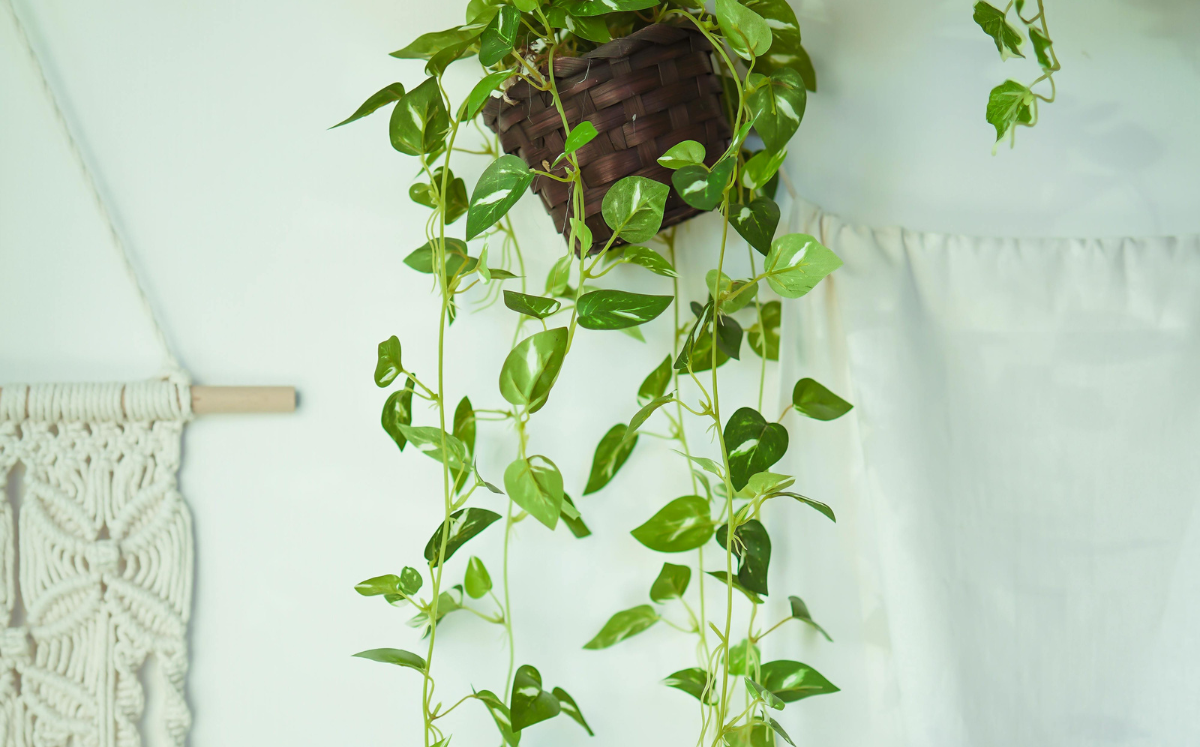The pothos plant (Epipremnum) is a popular houseplant - it is particularly valued for its heart-shaped leaves and its easy care. Originally from the tropical regions of Southeast Asia, Australia and the Pacific Islands, the pothos plant is known for its versatility and adaptability. It belongs to the Araceae family.
Pothos species: Epipremnum aureum and pinnatum
Should it be a spotted pothos plant, a pothos plant with velvety leaves or a pothos plant with bright yellow leaves? It is a climbing houseplant with a wide variety.
Epipremnum aureum: Known as "Golden Pothos", it is one of the most popular species.
Epipremnum pinnatum: This species is characterized by its slender, spotted leaves and its creeping shoots.

Caring for pothos
Epipremnum is extremely easy to care for, as it forgives you if you forget to water it. It is also quite undemanding in terms of location (light and humidity).
The right location
They thrive in a range of light conditions, from bright to partially shaded locations, and can even survive in dark corners. Some varieties like the "Marble Queen" or "Neon" require more light, while others like the "Jade" are also suitable for darker rooms like the bathroom. Too much direct sunlight, however, can cause the leaves to burn.

Repotting the pothos plant
The pothos plant usually grows as a hanging plant, but can also climb on a moss stick, with shoots that can grow up to 10 meters long. Regular repotting is recommended, as the roots grow quickly and thus make use of the space available in the pot. Ideally, it should be repotted into a larger pot every 1-2 years, preferably in spring or summer. A slightly larger pot and fresh soil should be used to encourage the plant to grow.
Substrate for houseplants
The pothos plant prefers a loose, well-drained substrate that provides good drainage. In this video we show you how to mix soil yourself.

Watering the pothos plant
The pothos plant needs regular but small watering. Allow the soil to dry slightly between waterings to avoid waterlogging and the resulting root rot. A pot with holes in the bottom of the pot is a must, as this allows the water to drain into the saucer or planter. The leaves can benefit from being regularly sprayed with water using a spray bottle. This will prevent brown spots and leaf edges!
Fertilizing pothos - this is the best fertilizer
For optimal growth and lush leaf development of houseplants, we recommend the use of organic fertilizers. Our FARBIO® organic liquid fertilizer for green plants provides your pothos plant with all the important nutrients in a sustainable manner.
Our special fertilizer, FARBIO® Nitrogen Bio-Boost , is ideal for intense green leaves and magnificent growth. It can be easily sprayed onto the leaves.

Is this houseplant poisonous?
Yes, the pothos plant is poisonous to humans and animals and should be placed out of the reach of children and pets.
Propagating pothos
The best way to propagate the pothos plant is through cuttings. These can simply be placed in a glass of water or directly in the soil, where they quickly form new roots.

What to do if there are pests on the plant?
If your pothos is infested with pests, there are various measures you can take to protect it. Common pests include spider mites and mealybugs. Treatment with neem oil can be an effective solution. Make sure you thoroughly remove the infected parts of the plant and then treat the plant with it to prevent further spread. You can find out more about controlling pests on your houseplant here!

























